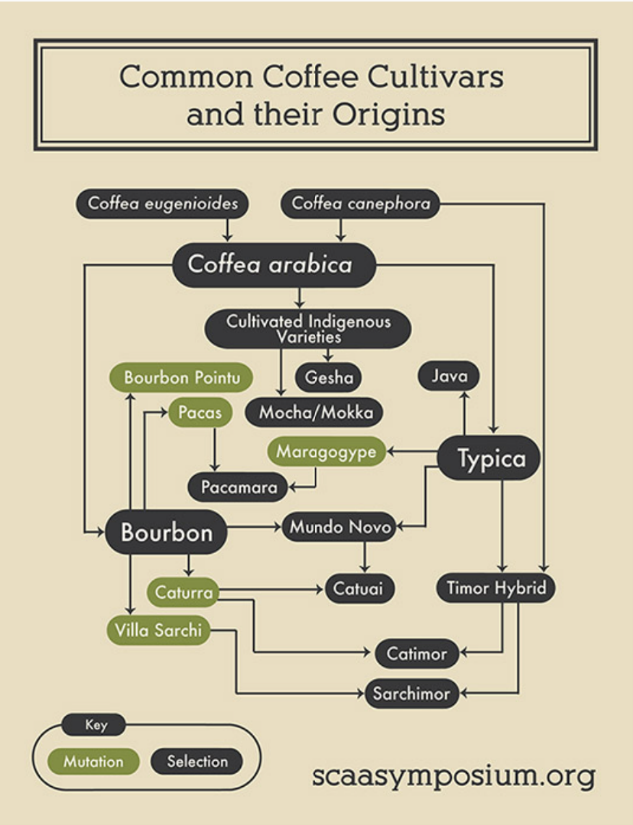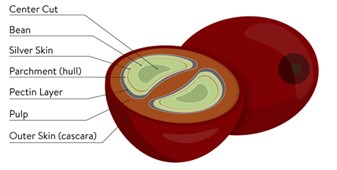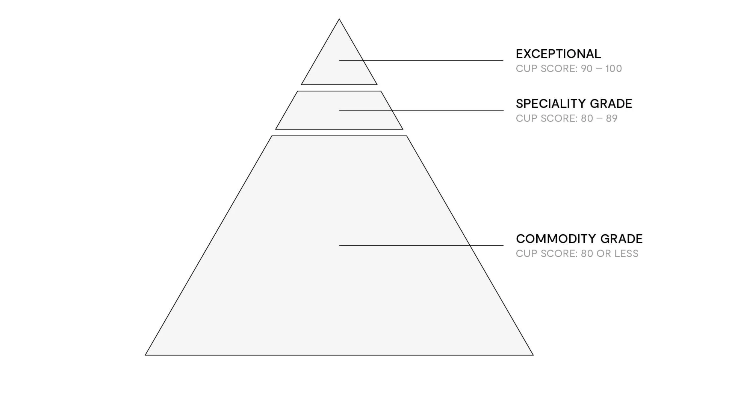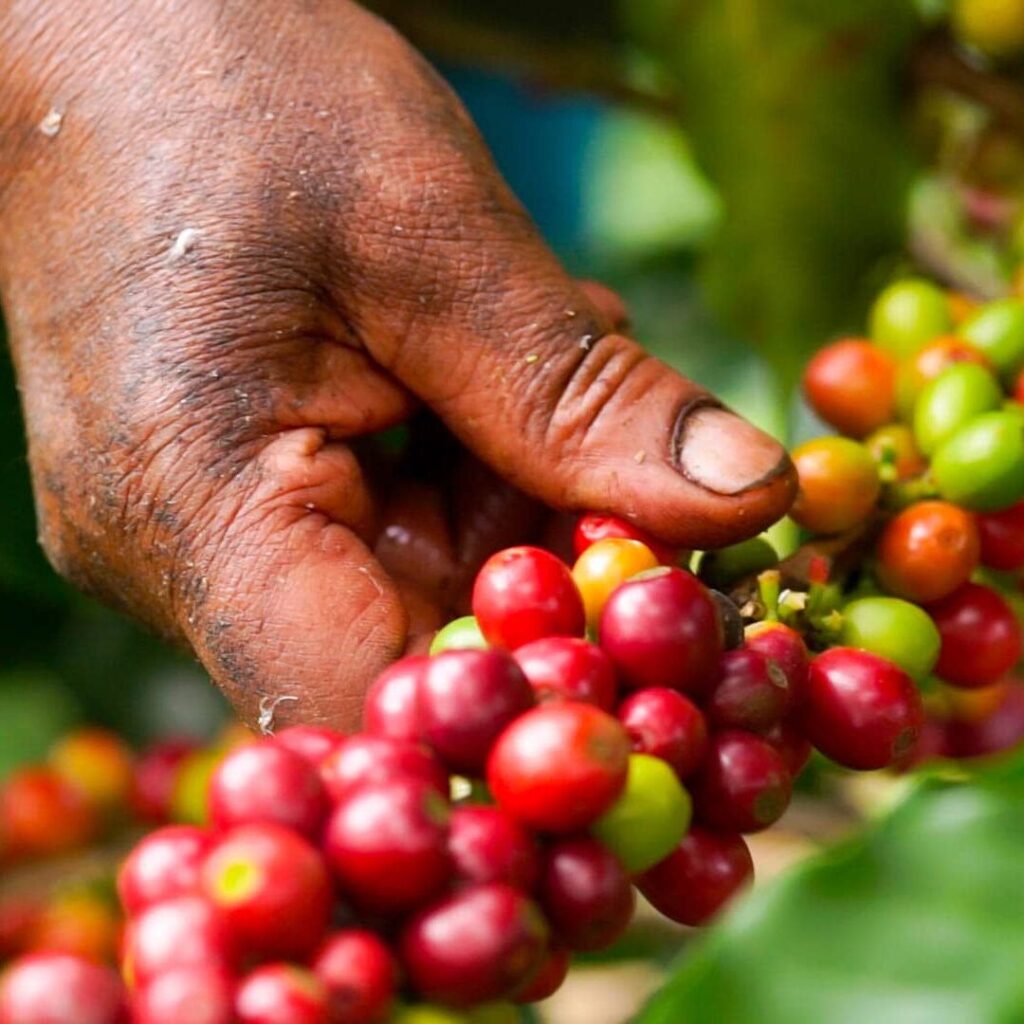The coffee beans that we roast, grind, and brew are actually fruit seeds. The coffee plant produces coffee cherries, which contain coffee beans as seeds.
Coffee plants can naturally reach heights of over 30 feet (9 meters). However, producers cut and stump plants short to preserve energy and facilitate harvesting. In a constrained space, smaller trees produce more and of higher quality.
Each tree has green, waxy leaves that grow in pairs, and coffee cherries develop on its branches. Depending on the cultivar, a coffee plant takes three to four years to bear fruit. (Perfectly Daily Grind, 2019)
Taxonomy
Family: Rubiacea
This family is known as the “Coffee” or “Madder” family and has 450 genera and around 6,500 species worldwide. These plants typically have simple leaves (undivided) that are opposite (two leaves at the node, usually near a lateral bud or shoot) or sometimes whorled (more than 2 around a node). Flowers usually have both male and female sex organs.
Genus: Coffea. Overall, the genus has about 100 species, only a few of which are commercially relevant.
Species: arabica makes up approximately 70% of the world’s coffee production. Other species not so common in specialty include canephora (var.”Robusta”) and liberica. Of all of the Coffea species, only arabica is self-fertile, and therefore can be self-pollinated. The arabica species also typically have lower caffeine contents than canephora. (SCA Coffee, n.d.)

What is coffee skin? Parchment? Pulp?
The coffee drupe’s skin is called the exocarp or the epicarp, and underneath it is a pulp layer called mesocarp. Finally, under those is the slimy parenchyma, which is the goo that is eaten away during the fermentation process in processing.
The beans themselves are covered in the endocarp, known in the industry as parchment. Inside the parchment are the two coffee seeds, each covered by another membrane known as silver skin. (SCA Coffee, n.d.)

What is the difference between speciality coffee and commercial coffee?
Speciality coffee is graded on a 100-point scale determined by the Speciality Coffee Association, a nonprofit organisation with members in over 40 countries; the SCA represents coffee professionals throughout the industry, including producers, exporters, roasters, and baristas. The SCA set standards at every stage of coffee production, determines the strict rules over classification, and decides what is considered speciality.
Speciality coffee must score over 80 to qualify. There are three grading brackets within this range: coffee graded with a score between 90-100 is ‘Outstanding’; 85-89.99 is ‘Excellent’; and coffee with a score of 80-84.99 is ‘Very Good’.
Once grown, harvested, and processed, speciality coffee beans must pass a number of checks to ascertain if it still meets one of three ratings. The SCA also set the standards on the process of coffee grading: a minimum requirement for speciality coffee is the number of defects: for every 350g of milled coffee, there must be no more than 5 classed defects. (Origin Coffee, 2023)
Where is speciality coffee sourced?
Speciality coffee is sourced from all around the world, typically following the ‘bean belt’. This is a horizontal stretch along either side of the equator, between the Tropics of Cancer and Capricorn, that includes the major coffee-growing regions. Speciality coffee is historically sourced at higher altitudes and, if possible, through direct exchange with growers and producers.
As a specialist coffee roaster, we purchase only speciality coffees, whether they are roasted for a blend or decaf. Every coffee we source is based on relationships, which has led us to both well-known coffee-producing countries like Brazil, Colombia, and Panama, as well as lesser-known and smaller coffee-producing countries like Indonesia and Timor-Leste.

When it comes to sourcing speciality coffee, we search for the same thing regardless of the country: great coffee cultivated with respect for the environment while offering training, education, and support to individuals at every stage of the supply chain. With each speciality coffee we source, we pledge to provide quality that supports and invests in the future of coffee.
We acknowledge that the text and information shared here are curated from publicly available resources. Our aim is to compile and present these materials in a simplified format for learning and awareness, with full credit to the original sources listed.

